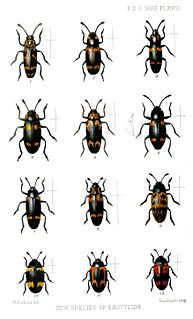
Erotylidae, or the pleasing fungus beetles, is a family of beetles containing over 100 genera. In the present circumscription, it includes the subfamilies Dacninae, Encaustinae, Erotylinae, Megalodacninae, and Tritominae. In other words, the narrowly circumscribed Erotylidae correspond to the subfamily Erotylinae in the definition sensu lato. They feed on plant and fungal matter; some are important pollinators, while a few have gained notoriety as pests of some significance. Sometimes, useful and harmful species are found in one genus, e.g. Pharaxonotha. Most pleasing fungus beetles, however, are inoffensive animals of little significance to humans.
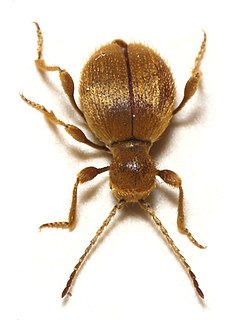
Spider beetles make up the subfamily Ptininae, in the family Ptinidae. There are approximately 70 genera and 600 species in the subfamily, with about 12 genera and 70 species in North America north of Mexico.

Trogoderma is a genus of beetles in the family Dermestidae, the skin beetles. There are about 135 species worldwide.

Attagenus is a genus of beetles. This genus is found in tropical Africa, the Palearctic including Europe, the Near East, the Nearctic, North Africa and East Asia. There are nearly 200 species.
Trinodes is a genus of beetles in the family Dermestidae, the skin beetles. The genus is distributed in the Palearctic, Oriental, and Afrotropic ecozones. There are about 16 species.
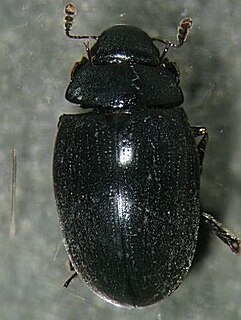
Nosodendridae is a family of beetles, with only 67 species in three genera:
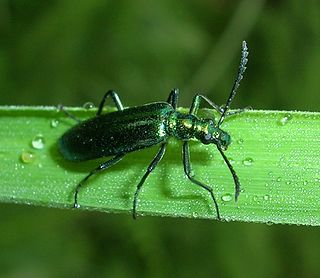
Prionoceridae is a small family of beetles, in the suborder Polyphaga. The form a group within the cleroid beetles and were formerly treated as a subfamily Prionocerinae within the family Melyridae. Very little is known of their life history but most species are pollen feeders as adults and occur in large numbers during spring or the host flowering season. Larvae are predatory or feed on decomposing wood.
Ceracis is a genus of tree-fungus beetle in the family Ciidae.
Orthocis is a genus of tree-fungus beetles in the family Ciidae.
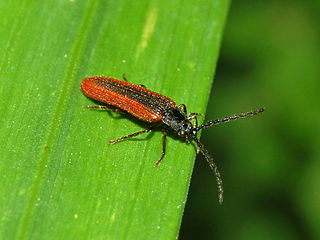
Omalisidae are a very small family of beetles within the superfamily Elateroidea. Members of this beetle family have bioluminescent organs on the larvae. The most recent evidence indicates they are the sister group to a clade comprising the families Rhagophthalmidae and Phengodidae.
Cryptorhopalum is a genus of beetles in the family Dermestidae, containing the following species:

Phradonoma is a genus of beetles in the family Dermestidae, containing the following species:
Thaumaglossa is a genus of beetles in the family Dermestidae, containing the following species:
Porculus is a genus of beetles in the family Ciidae, containing the following species:

Phytoecia is a genus of longhorn beetles of the subfamily Lamiinae, containing the following species:

Tillinae is a subfamily of beetles in the family Cleridae, the checkered beetles.

Pachnephorus is a genus of leaf beetles in the subfamily Eumolpinae. It is distributed in Africa, Asia and Europe.
Ciini is a tribe of minute tree-fungus beetles in the family Ciidae. There are at least 30 genera in Ciini.











